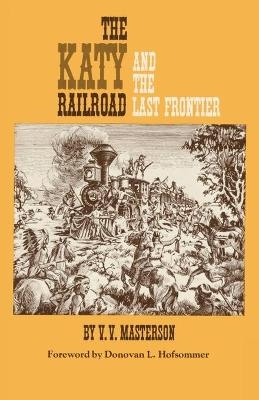
The Katy Railroad and the Last Frontier
Seiten
1952
University of Oklahoma Press (Verlag)
978-0-8061-1507-8 (ISBN)
University of Oklahoma Press (Verlag)
978-0-8061-1507-8 (ISBN)
In the development of mid-America after the Civil War the pacesetter was not so much the prairie schooner as it was a much newer phenomenon, the railroad.
In the race from Missouri and Kansas to the Gulf of Mexico, the Missouri-Kansas-Texas Company (MK&T) led the way. A dynamic, hard-hitting railroad, the Katy beat all competitors to the northern border of Indian Territory in 1870 - more than two decades before the opening of the Cherokee Strip and the formation of the Oklahoma Territory. But the Katy did not stop at Indian Territory; it plunged southward across the Red River into Texas, and then built in the other direction, linking St. Louis with the developing areas of southern Texas and the Gulf.
The Katy Railroad and the Last Frontier traces the history of the Katy from its earliest beginnings to the present. It is railroad history at its best: objectively written, revealing the human failings as well as the titanic achievements of early railroad builders in the Southwest. It depicts the construction problems, the battle for townsite spoils, the financial struggles between railroads and their financial backers, and the development of new towns and cities through the growth of rail transportation.
In the race from Missouri and Kansas to the Gulf of Mexico, the Missouri-Kansas-Texas Company (MK&T) led the way. A dynamic, hard-hitting railroad, the Katy beat all competitors to the northern border of Indian Territory in 1870 - more than two decades before the opening of the Cherokee Strip and the formation of the Oklahoma Territory. But the Katy did not stop at Indian Territory; it plunged southward across the Red River into Texas, and then built in the other direction, linking St. Louis with the developing areas of southern Texas and the Gulf.
The Katy Railroad and the Last Frontier traces the history of the Katy from its earliest beginnings to the present. It is railroad history at its best: objectively written, revealing the human failings as well as the titanic achievements of early railroad builders in the Southwest. It depicts the construction problems, the battle for townsite spoils, the financial struggles between railroads and their financial backers, and the development of new towns and cities through the growth of rail transportation.
Vincent Victor Masterson, a native of Edinburgh, Scotland, and resident of St. Louis, Missouri, was a student of railroad history for more than thirty years and of M.K. & T. history for the better part of that period. Donovan L. Hofsommer, was a noted authority on railroading and editor of The Lexington News Letter in Plainview Texas.
| Vorwort | Don Hofsommer |
|---|---|
| Zusatzinfo | 32 black & white illustrations, 14 maps |
| Verlagsort | Oklahoma |
| Sprache | englisch |
| Maße | 140 x 216 mm |
| Gewicht | 417 g |
| Themenwelt | Sachbuch/Ratgeber ► Geschichte / Politik ► Regional- / Landesgeschichte |
| Natur / Technik ► Fahrzeuge / Flugzeuge / Schiffe ► Schienenfahrzeuge | |
| Reiseführer ► Nord- / Mittelamerika ► USA | |
| Geschichte ► Allgemeine Geschichte ► Neuzeit (bis 1918) | |
| Geisteswissenschaften ► Geschichte ► Regional- / Ländergeschichte | |
| ISBN-10 | 0-8061-1507-6 / 0806115076 |
| ISBN-13 | 978-0-8061-1507-8 / 9780806115078 |
| Zustand | Neuware |
| Haben Sie eine Frage zum Produkt? |
Mehr entdecken
aus dem Bereich
aus dem Bereich
die visuelle Chronik der Schienenfahrzeuge
Buch | Hardcover (2024)
DK Verlag Dorling Kindersley
CHF 48,90
St. Moritz – Zermatt : die Traumreise im langsamsten Schnellzug der …
Buch | Hardcover (2023)
Verlag Berg & Tal
CHF 25,90
Betriebsmaschinendienst, Einsatz bei den Bahnbetriebswerken und …
Buch | Hardcover (2024)
EK-Verlag
CHF 68,90


